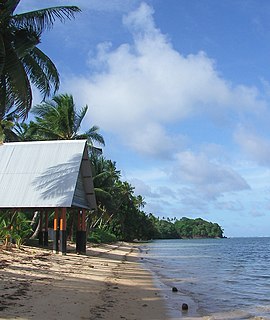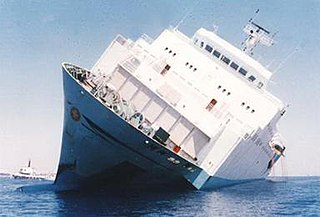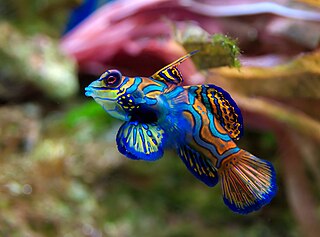
Palau, officially the Republic of Palau and historically Belau, Palaos or Pelew, is an island country located in the western Pacific Ocean. The country contains approximately 340 islands, and together with parts of the Federated States of Micronesia, forms the western chain of the Caroline Islands. Its area is 466 square kilometers (180 sq mi). The most populous island is Koror. The capital Ngerulmud is located on the nearby island of Babeldaob, in Melekeok State. Palau shares maritime boundaries with international waters to the north, Micronesia to the east, Indonesia to the south, and the Philippines to the west.

The economy of Palau consists primarily of subsistence agriculture and fishing. The government is the major employer of the work force, relying heavily on financial assistance from the United States. The population enjoys a per capita income of more than twice that of the Philippines and much of Micronesia. Long-term prospects for the tourist sector have been greatly bolstered by the expansion of air travel in the Pacific and the rising prosperity of leading East Asian countries.

Koror is the state comprising the main commercial centre of the Republic of Palau. It consists of several islands, the most prominent being Koror Island.

Peleliu is an island in the island nation of Palau. Peleliu, along with two small islands to its northeast, forms one of the sixteen states of Palau. The island is notable as the location of the Battle of Peleliu in World War II.

Babeldaob is the largest island in the island nation of the Republic of Palau. It is in the western Caroline Islands, and the second largest island in the Micronesia region of Oceania. Palau's capital, Ngerulmud, is located on Babeldaob, in Melekeok State.

The Rock Islands of Palau, also called Chelbacheb, are a collection of several hundred small limestone or coral uprises in the Southern Lagoon of Palau between Koror and Peleliu, now an incorporated part of Koror State. There are between 250 and 300 islands in the group according to different sources, with an aggregate area of 42 square kilometres (16 sq mi) and a maximum height of 207 metres (679 ft). The islands were declared a UNESCO World Heritage Site in 2012.

The Blue Hole is a diving location on the southeast Sinai, a few kilometres north of Dahab, Egypt on the coast of the Red Sea.

Malpelo is a small island in the eastern Pacific Ocean, located about 500 km (310 mi) west of the Colombian mainland with a military post manned by the Colombian Armed Forces. It consists of a sheer and barren rock with three high peaks, the highest being Cerro de la Mona with a height of 300 m (980 ft). The island is about 1.5 kilometres in length from northeast to southwest, and 640 metres in width.

The Great Blue Hole is a giant marine sinkhole off the coast of Belize. It lies near the center of Lighthouse Reef, a small atoll 70 km (43 mi) from the mainland and Belize City. The hole is circular in shape, 318 m (1,043 ft) across and 124 m (407 ft) deep. It was formed during several episodes of quaternary glaciation when sea levels were much lower. Analysis of stalactites found in the Great Blue Hole shows that formation took place 153,000; 66,000; 60,000; and 15,000 years ago. As the ocean began to rise again, the cave was flooded. The Great Blue Hole is a part of the larger Belize Barrier Reef Reserve System, a World Heritage Site of the United Nations Educational, Scientific and Cultural Organization (UNESCO).

MS Zenobia was a Swedish built Challenger-class RO-RO ferry launched in 1979 that capsized and sank in the Mediterranean Sea, close to Larnaca, Cyprus, in June 1980 on her maiden voyage. She now rests on her port side in approximately 42 meters (138 ft) of water and was named by The Times, and many others, as one of the top ten wreck diving sites in the world.

Pacific Abyss is a three-part series on British television's (BBC1), which first aired in Sunday 17 August 2008. It is hosted by Kate Humble, Mike Smart and Mike deGruy with filming beginning in April/May 2007.
A blue hole is a submarine cave or sinkhole. It may also refer to:

The Maldives, has become one of the world's best scuba diving destinations because of the white sand beaches, coral reefs, clear warm waters, numerous scuba diving sites and rich marine life.

Jonathan Bird is an American photographer, cinematographer, director and television host. He is best known for his role as the host of Jonathan Bird's Blue World, a family-friendly underwater exploration program on public television in the United States. His work is largely underwater in nature.

Ulong is a major island and channel of western Palau. It is sometimes called Aulong and originally written Oroolong in English. Ulong is regarded by many as one of the best drift dives in the world.

Germán Alejandro Garmendia Aranis, known by his YouTube channels HolaSoyGerman and JuegaGerman, is a Chilean YouTuber, comedian and writer. With a combined subscriber count between all his channels reaching over 80 million, he is not only one of the biggest Spanish-speaking YouTubers, but also one of the biggest Youtubers of all time. He has produced a variety of songs together with his band Ancud. As of June 2019, his main YouTube channel is the second-most subscribed in the Spanish language behind Badabun.

Park Jae-hyung, better known as Jae, is a Korean-American musician, singer, songwriter, composer, and streamer, best known as a vocalist and electric guitarist of South Korean rock band Day6. Prior to joining Day6, he gained attention in South Korea as one of the final six contestants in the first season of the singing competition television series K-pop Star.

German Channel is an artificial channel dug into the Palau's barrier reef in the south-west that connects the lagoon to the Pacific Ocean. The channel was made by the Germans during the time when Palau was a German colony. Presently, it is a popular dive site.

Blue Hole is a blue hole dive site off the western coast of Guam. It is variously described as "Guam’s signature natural feature dive," "the most requested dive site on Guam," and "one of Guam’s most popular divesites". It is located in northern Agat Bay, just south of the entrance to Apra Harbor. Despite being very close to the southern coast of the Orote Peninsula, sheer cliffs mean that it is done exclusively as a boat dive, typically out of Cabras Marina in Apra Harbor, located 20 minutes away. The top of the underwater sinkhole begins at about 60 ft (18 m) and drops to more than 300 ft (91 m). However, the sinkhole is located next to a wall and there is an opening that allows exit at about 130 ft (40 m), putting it just within the limits of an advanced recreational dive, depending on certifying agency. The opening of the sinkhole appears to be a heart shape to divers within it. While entry to the site is done while the dive boat is hooked into a mooring buoy, exit typically requires deploying a surface marker buoy in east-to-west current and pickup in the open ocean.


















